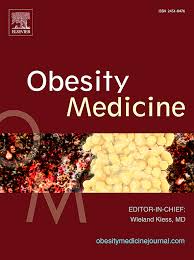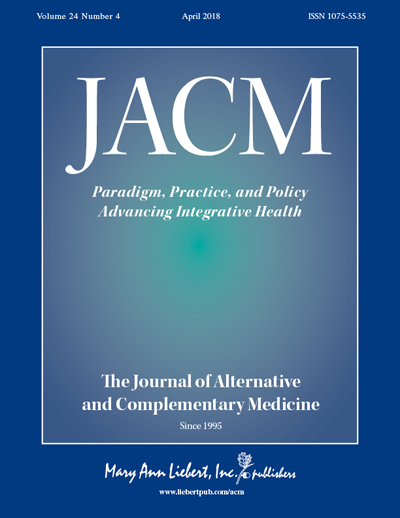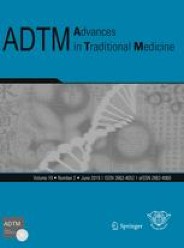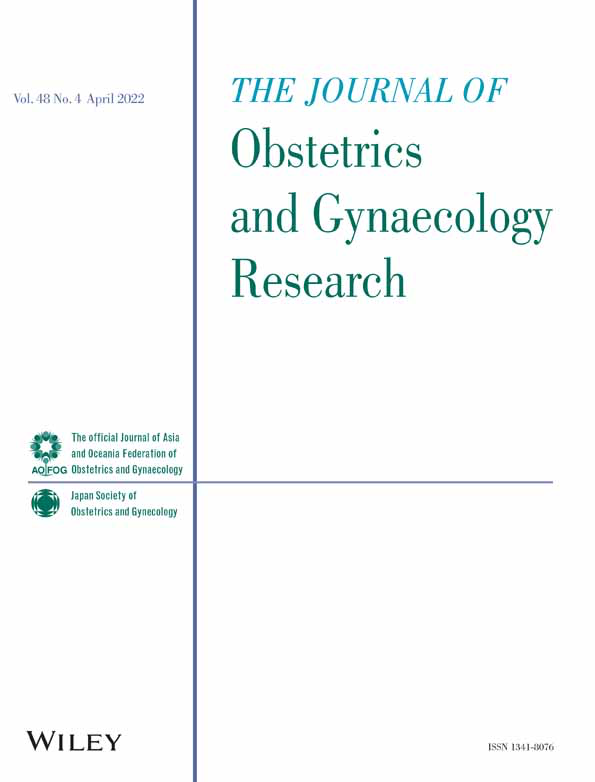Clary Sage
How to submit an article:
- Registered users can submit any published journal article that has a unique DOI (Digital Object Identifier) name or link to Research Hub.
- For example, you can paste the full DOI link:
https://doi.org/10.1109/5.771073or just the DOI name:10.1109/5.771073into the field above and click submit. - The person who is first to submit a valid article to Research Hub will forever be credited for it, and every article submission earns you +6 Research Points.
Published research studies are articles that present the findings of original research that has undergone a peer-review process and has been made publicly available in scholarly journals, books or other media.

Effect of clary sage oil as an aromatherapy on cardiac autonomic function among patients with premenstrual syndrome – A randomized controlled study
2020 Jun Obesity Medicine Geethanjali S, Venugopal V, Poonguzhali S, Maheshkumar K
Clary sage aromatherapy demonstrated immediate improvements in cardiac autonomic function towards parasympathetic dominance among women with PMS, as indicated by significant changes in short term HRV parameters. Further research with longer durations of aroma inhalation is needed to validate these findings.
Experimental Study Premenstrual Syndrome Aromatherapy Clary Sage
The Effects of Essential Oil on Salivary Oxytocin Concentration in Postmenopausal Women
2020 Mar 01 The Journal of Alternative and Complementary Medicine Tarumi W, Shinohara K
Randomised Controlled Trial Oxytocin Chamomile Clary Sage JasmineCertain essential oils such as lavender, neroli, jasmine, roman chamomile, clary sage, and Indian sandalwood can potentially increase oxytocin concentrations in postmenopausal women.

Clary sage essential oil and its biological activities
2020 Jan 09 Advances in Traditional Medicine Mahboubi M
Clary sage oil is effective as an anti-stress, anti-depression, and analgesic agent in primary dysmenorrhea, and it exhibits antioxidant, antimicrobial, cytotoxic, and anti-inflammatory effects without adverse effects.
Theoretical Article Review Article Clary Sage
Pain relief assessment by aromatic essential oil massage on outpatients with primary dysmenorrhea: A randomized, double‐blind clinical trial
2012 Mar 22 Journal of Obstetrics and Gynaecology Research Ou MC, Hsu TF, Lai AC, Lin YT, Lin CC
Randomised Controlled Trial Marjoram Clary Sage Lavender Aromatherapy Period PainBlended essential oils, including lavender, sage, and marjoram, show potential in relieving menstrual cramps and reducing pain duration in women with primary dysmenorrhea.
Research insights are moderated by the Research Hub team and offer an at-a-glance overview of interesting research findings.

2020 The Journal of Alternative and Complementary Medicine
Certain essential oils such as lavender, neroli, jasmine, roman chamomile, clary sage, and Indian sandalwood can potentially increase oxytocin concentrations in postmenopausal women.
Randomised Controlled Trial Chamomile Jasmine Oxytocin
The Effects of Essential Oil on Salivary Oxytocin Concentration in Postmenopausal Women
Tarumi W, Shinohara K

2012 Journal of Obstetrics and Gynaecology Research
Blended essential oils, including lavender, sage, and marjoram, show potential in relieving menstrual cramps and reducing pain duration in women with primary dysmenorrhea.
Randomised Controlled Trial Aromatherapy Lavender Marjoram Period Pain
Pain relief assessment by aromatic essential oil massage on outpatients with primary dysmenorrhea: A randomized, double‐blind clinical trial
Ou MC, Hsu TF, Lai AC, Lin YT, Lin CC
Review Articles
Review articles summarise and critically evaluate the current state of research on a specific topic or field by synthesising multiple primary research studies.
Clinical Trials
Clinical trials are research studies that involve people and are conducted to evaluate the safety and efficacy of new treatments or interventions, such as drugs, medical devices, or behavioural therapies.

The Effects of Essential Oil on Salivary Oxytocin Concentration in Postmenopausal Women
2020 Mar 01 The Journal of Alternative and Complementary Medicine Tarumi W, Shinohara K
Randomised Controlled Trial Oxytocin Chamomile Clary Sage JasmineCertain essential oils such as lavender, neroli, jasmine, roman chamomile, clary sage, and Indian sandalwood can potentially increase oxytocin concentrations in postmenopausal women.

Pain relief assessment by aromatic essential oil massage on outpatients with primary dysmenorrhea: A randomized, double‐blind clinical trial
2012 Mar 22 Journal of Obstetrics and Gynaecology Research Ou MC, Hsu TF, Lai AC, Lin YT, Lin CC
Randomised Controlled Trial Marjoram Clary Sage Lavender Aromatherapy Period PainBlended essential oils, including lavender, sage, and marjoram, show potential in relieving menstrual cramps and reducing pain duration in women with primary dysmenorrhea.
Study Protocols
Published study protocols are detailed plans that outline the objectives, methodology, statistical analyses, and organisation of a research study that have been made publicly available for others to review and use as a reference.
Presentation Slides

Randomised Controlled Trial
Certain essential oils such as lavender, neroli, jasmine, roman chamomile, clary sage, and Indian sandalwood can potentially increase oxytocin concentrations in postmenopausal women.
Tarumi W, Shinohara K

Randomised Controlled Trial
Blended essential oils, including lavender, sage, and marjoram, show potential in relieving menstrual cramps and reducing pain duration in women with primary dysmenorrhea.
Ou MC, Hsu TF, Lai AC, Lin YT, Lin CC
Executive Summary
Write an executive summary in the form of a blog article on the topic of "Research into Chinese medicine treatment for Clary Sage" summarising the research below and using language that can be easily understood by patients and avoiding medical jargon using a professional and caring tone of voice.
Write an executive summary in the form of a blog article on the topic of "Researched Chinese medicine treatments for Clary Sage" summarising the research below in an objective and easy to understand way, and using language that can be easily understood by patients. Group the article into Chinese medicine treatments first, followed by nutrition and other treatments. Avoid using medical jargon and use a professional and caring tone of voice.
Write me a concise but easy to understand executive summary on the topic of "Chinese medicine treatments for Clary Sage" based on the following research that I will give you. Your summary should be 2 paragraphs long in Australian English spelling and include references to the studies.
A Randomised Controlled Trial published in 2020 in the journal The Journal of Alternative and Complementary Medicine found that Certain essential oils such as lavender, neroli, jasmine, roman chamomile, clary sage, and Indian sandalwood can potentially increase oxytocin concentrations in postmenopausal women. In this study, fifteen postmenopausal women were subjected to the effects of ten different essential oils one at a time. The oils exposed to included rose otto, sweet orange, lavender, neroli, frankincense, jasmine absolute, ylang ylang, roman chamomile, clary sage, and Indian sandalwood. Initially, they were exposed to a control for 20 minutes, followed by exposure to an essential oil for 20 minutes. Each woman was exposed to only a single kind of essential oil per day. Saliva was collected immediately before and after both control exposure and essential oil exposure. The oxytocin levels in the saliva were then measured. The findings revealed an increase in salivary oxytocin concentrations following exposure to six out of the ten essential oils. Specifically, lavender, neroli, jasmine absolute, roman chamomile, clary sage, and Indian sandalwood were associated with a significant increase in salivary oxytocin when compared to the control odor. This study implies that olfaction stimulation with the listed essential oils might help counter the reduction of muscle mass and function caused by aging in women.
A Randomised Controlled Trial published in 2012 in the journal Journal of Obstetrics and Gynaecology Research found that Blended essential oils, including lavender, sage, and marjoram, show potential in relieving menstrual cramps and reducing pain duration in women with primary dysmenorrhea. For the methodology, the researchers conducted a randomized, double-blind clinical trial involving 48 outpatients suffering from primary dysmenorrhea. These patients’ discomfort was rated above five on a 10-point numeric scale. Participants were divided evenly into two groups: one was treated with a cream blending lavender, clary sage, and marjoram essential oils, while the other received a synthetic fragrance. All participants massaged the cream onto their lower abdomen daily, from the end of one menstrual cycle to the start of the next. In the discussion of results, it was found that the treatment provided relief and decreased pain duration for patients in the essential oils group following a single menstrual cycle. Among the blended oils, four key analgesic components—linalyl acetate, linalool, eucalyptol, and β-caryophyllene—were principally credited for pain reduction, constituting up to 79.29% of the blend. Thus, these findings propose that this mixed formula might be a valid alternative and complementary medicine approach for primary dysmenorrhea.
Moderation Tools
Topic
Sign In
Users not signed in are limited to viewing the 5 most recent items of content.